Jessica Ashman
-
Interview by Ama Dogbe
-
Published in October 2025
-
Jessica Ashman is an interdisciplinary artist working with painting, textiles, sound and animation to explore diasporic histories, mythologies and utopias. Her work often draws on her Jamaican heritage and her growing interest in plants, land and storytelling to create richly layered, immersive worlds. Her solo exhibition, Chimera Island, is the first show at Modern Painters, New Decorators’ new purpose-built arts venue in Loughborough, and runs from 6 September to 1 November 2025.
Ama Dogbe is a British-Ghanaian artist whose practice spans video games, animation and audio-visual installations. She has exhibited with Modern Painters, New Decorators and now contributes to the organisation as part of its management committee.
-
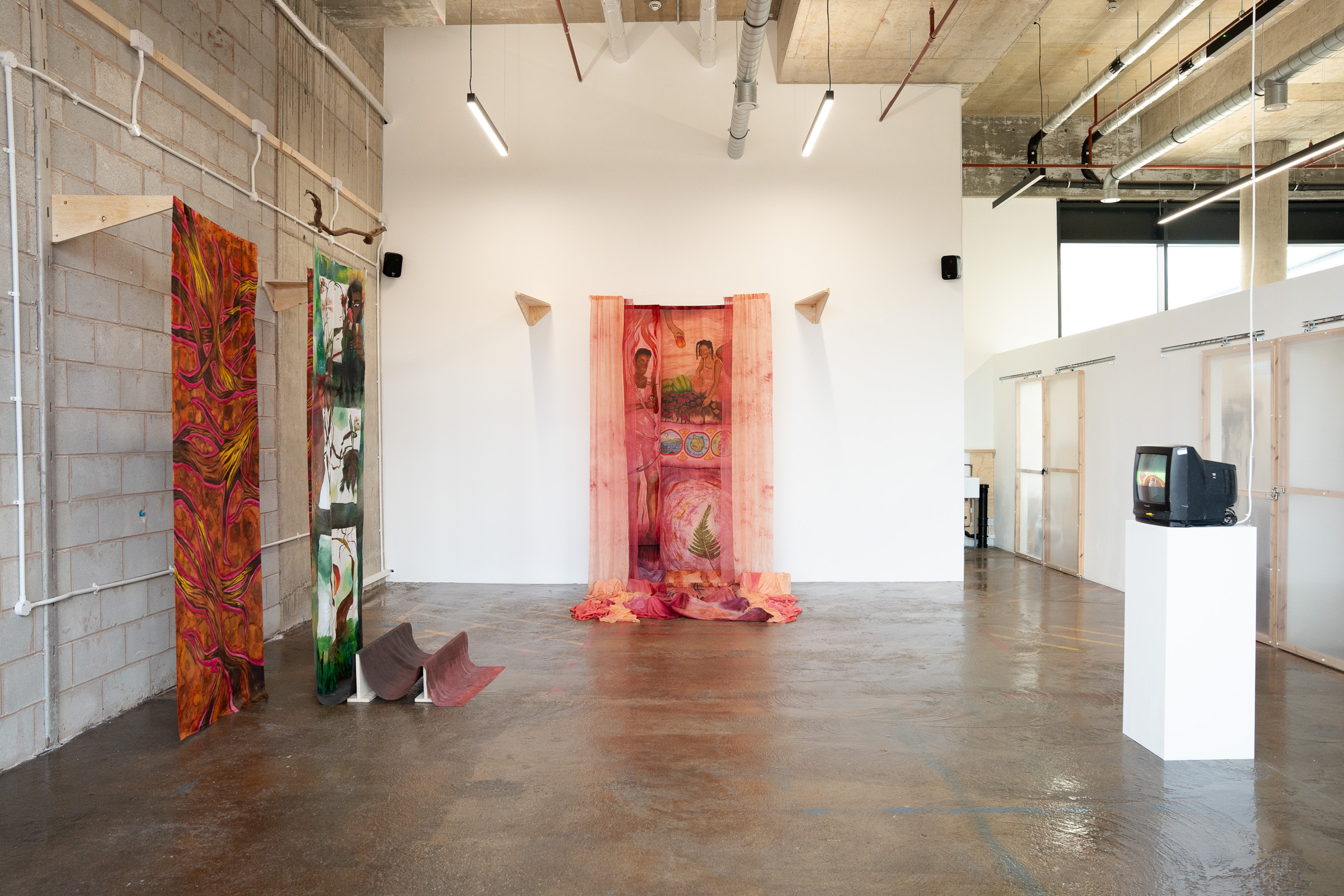
Chimera Island, installation view, Modern Painters, New Decorators, Loughborough, 2025
Hi Jessica. First, congratulations on your new solo show Chimera Island. To start, could you tell me in your own words what the show is about?
Thank you! The show is a bit of a smorgasbord of ideas. At first, I thought it would just be a kind of work-in-progress exhibition, maybe showing existing pieces. But then I became fascinated by this little piece of land in Leicestershire, a reservoir island called Brazil Island.
I found a claim online—though it turned out to be false—that Brazilwood might grow there. Brazilwood has a deep history tied to colonial trade and extraction, and I’d just finished a project in Jamaica looking at how plants collected there were used in European science, but also how enslaved people used those same plants for resistance and spirituality. So I thought, maybe this island could connect to those stories.
It turned out there was no Brazilwood on Brazil Island. We trespassed to check! But the histories I was reading, the conversations I had with David at MPND, and the symbolism tied to Brazilwood itself pushed me to think less literally. Instead, I imagined the island as a kind of mythological space: a homeland for the global majority affected by colonialism, especially through land access and botanical exploitation.
That’s where the title comes in. A chimera is a mythical hybrid beast, a sort of Frankenstein’s monster. Chimera Island became a hybrid island—part fact, part fantasy— where different diaspora histories could converge. It’s centred on my own Jamaican heritage and my interest in plants and horticulture. In a way, it feels like the beginning of a science fiction story: I was drawing maps, imagining who might live there, what they grow, why they’re there. It’s utopian, but tinged with dread—because it doesn’t actually exist, though I wish it did.
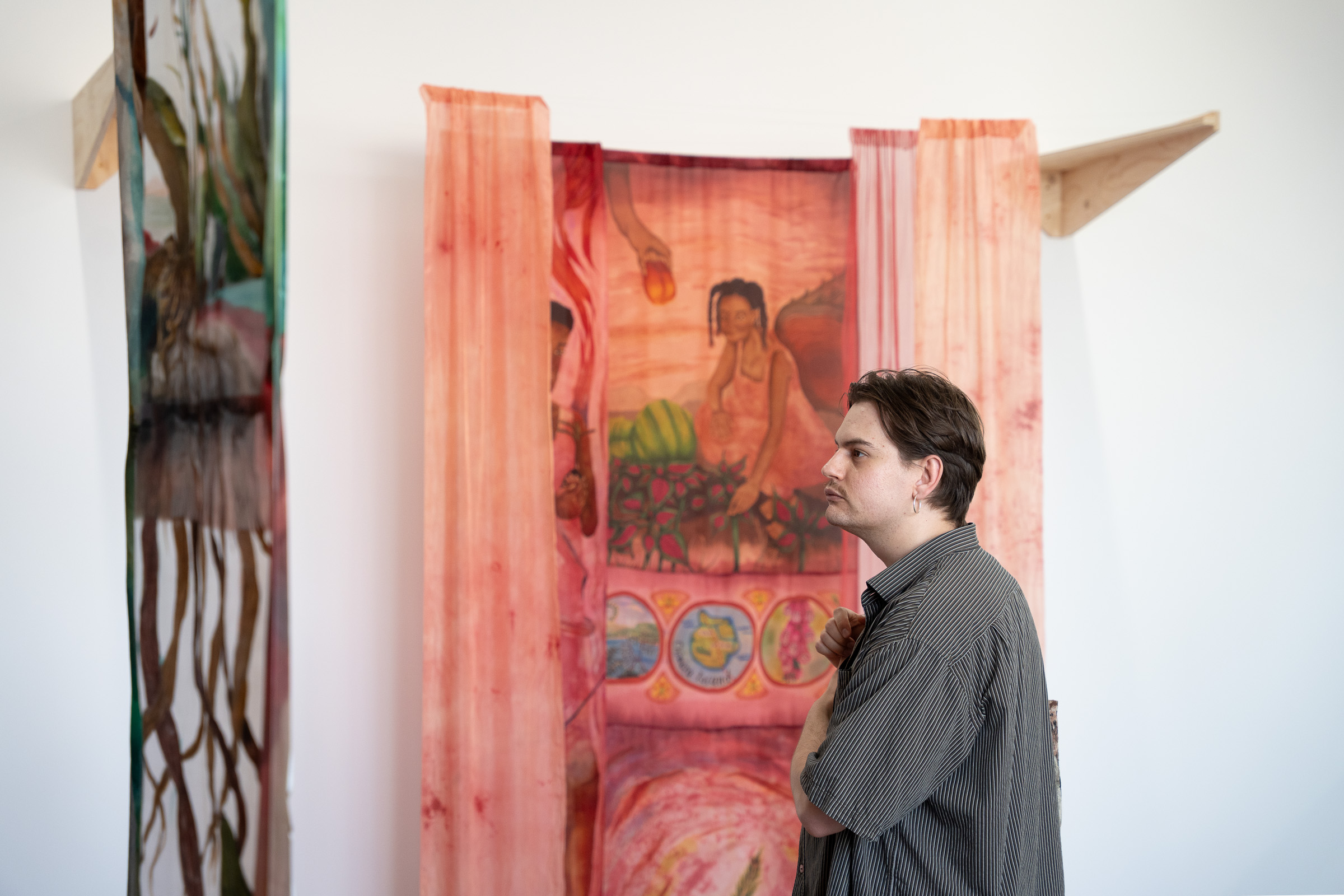
Chimera Island, installation view, Modern Painters, New Decorators, Loughborough, 2025
At the opening you mentioned that, with all the buzz of the night, people often miss the sound piece. I was one of them! But I’ve listened since, and the piece—You Just Got to Make a Path—really ties the exhibition together. It felt like a journey that drifts into fantasy. And music is clearly important to your practice. That night also ended with you DJing alongside Tayler Fisher, a studio holder at MPND. Could you talk about how the sound piece and the DJ set came about?
I wasn’t sure at first if I’d include a soundscape. Originally, I thought the project would be almost documentary-like—responding to plant material on the island. But the planning and scheming about how we’d actually get to Brazil Island became a story in itself!
I record a lot in my practice—family conversations, Carnival, ambient sounds—probably because of my background in animation and filmmaking. So I started recording during this project too: train sounds, conversations, even our nervous laughter as we snuck around. Later, when I began imagining the island’s characters, those recordings felt like they were part of the narrative. Two timelines emerged—reality and mythology—speaking to each other through sound.
Musically, I added guitar and played around in Ableton. I wanted the sound to carry a sense of menace and melancholy beneath the utopian surface—because the cynic in me feels paradise is always slightly out of reach. Ideally, you’d hear it through a sound system, with deep bass reverberating through the body, but even on headphones you catch that undercurrent of dread.
On my first site visit, Tayler gave me a zine which referenced reggae lyrics I instantly recognised. We bonded over dub and roots reggae. I’d never DJ’d before, but I had records, so I thought, why not? Tayler brought his full setup, and it was amazing. The night was joyful, but also fitting—the music itself speaks to histories of colonial resistance. Bass frequencies, roots, rebellion: all of that connects to what I’m trying to explore in my art.
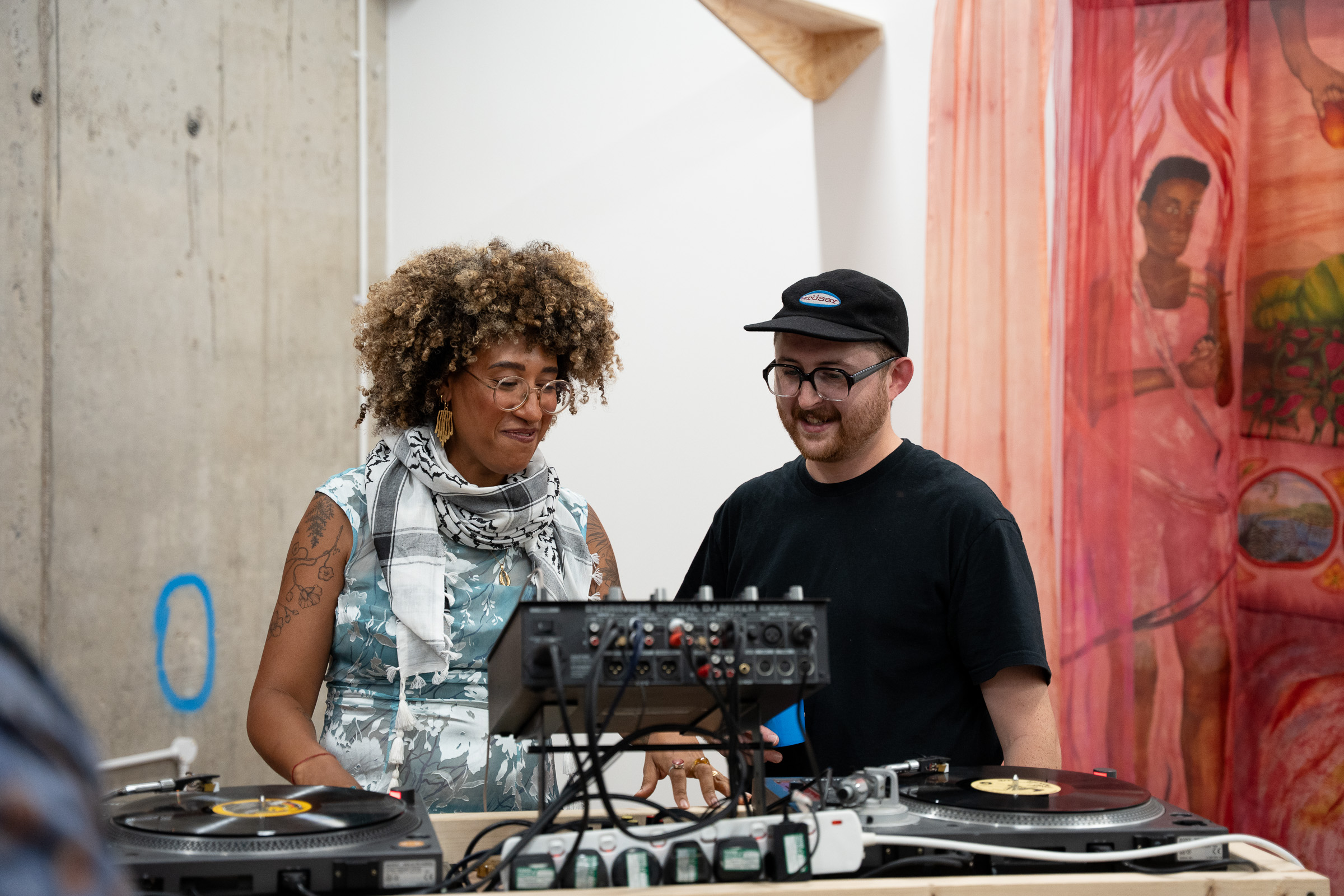
DJing at the Launch Event for Chimera Island, Modern Painters, New Decorators, Loughborough, 2025
That makes a lot of sense. More generally, how did the new MPND gallery space shape what you made for this exhibition?
It was such a privilege to be the first artist in that new space. The ceilings are really high, so my first instinct was to work with that verticality. In previous shows I’d used silk hangings in smaller rooms, but here I could scale up.
The soundscape was trickier. Usually with sound you’d plan speaker placement, acoustic treatment, all that. But with budget and time constraints, I embraced a DIY approach— letting the narrative lead rather than the tech.
At first, I hesitated about including older work, but as I developed the new pieces I realised there were strong connections to previous projects. Some animation I’d shown at Bristol Museum, for example, also explored food growing in Jamaica as resistance. So curatorially, it all came together, even if I worried it might feel patchwork. In the end, it felt cohesive.
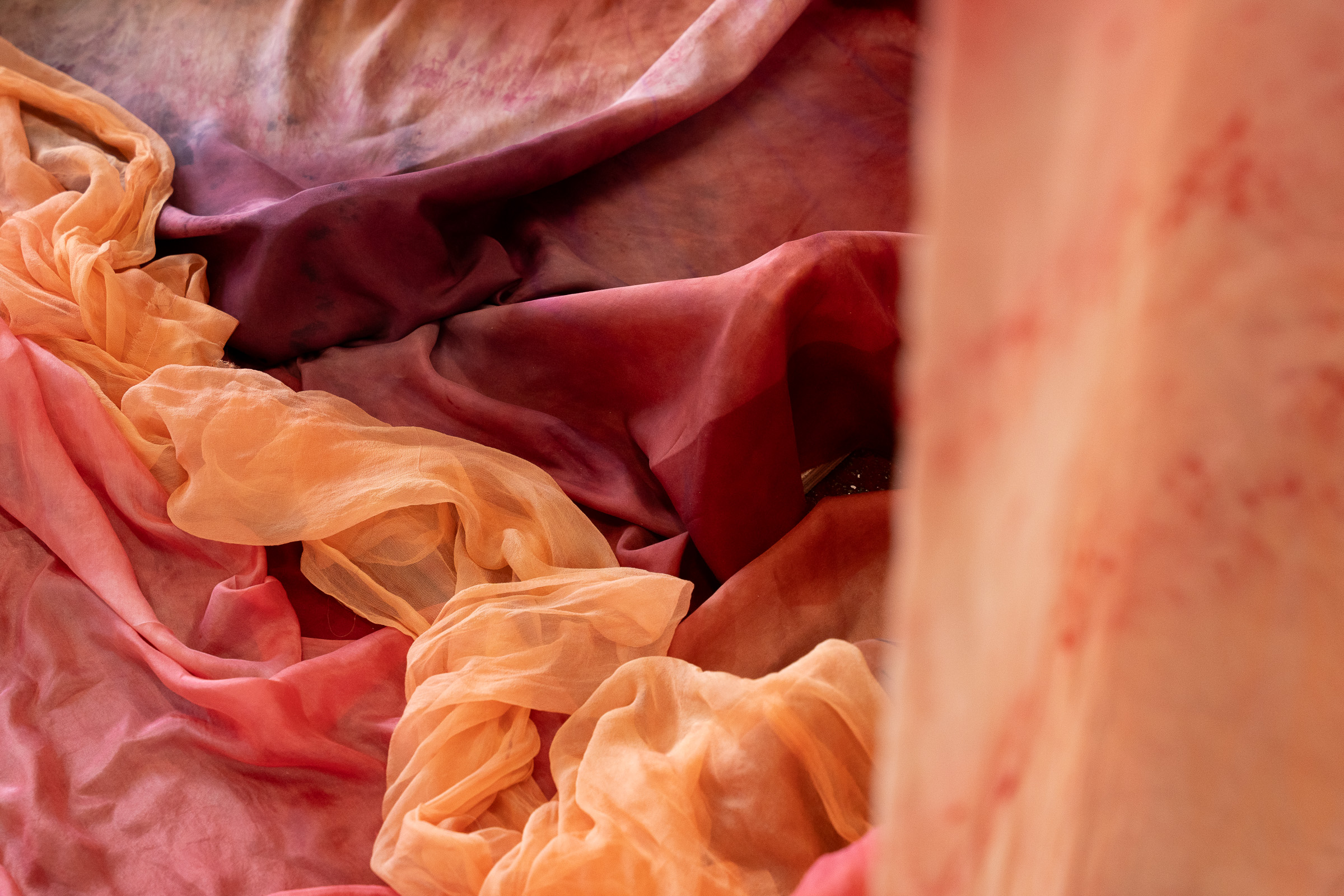
Chimera Island, detail, silk dye, watercolour pencil, archival pen and natural dyes (Brazilwood, Logwood, Madder and Ivy) on Habatoi silk and silk chiffon, 2025
In the show there are beautiful natural-dyed textile works. Was this your first time working with natural dyes?
Yes, at that scale. It was a huge risk because natural dyeing is notoriously unpredictable—the water from your tap can change the colour! But I’d always planned to learn, and I’d just taken a summer course supported by Artist News Network funding.
I’m a grower—I’ve just finished a two-year horticultural course—and I wanted to bring plants directly into my practice. Using them as materials felt like a sustainable step. I love that you can shift colours with simple things like vinegar or bicarbonate of soda, and that the process is partly out of your control. It’s embodied, tactile and decolonising in a way: the material dictates the outcome.
For Chimera Island, I wanted the characters to almost emerge from Brazilwood, so I dyed over my paintings—terrifying, because you risk ruining weeks of work. But the surprises were magical. The pinks, for instance, were unexpected but ended up giving the show a dreamy, cloud-like quality, perfect for this imagined island.
We’re speaking in your studio today. You come from an animation background—how has your studio practice evolved, and how do you use different spaces, like the garden or kitchen, in your work?
The garden and kitchen are definitely part of my studio now. Natural dyeing involves steaming and boiling plant material—it feels very witchy, stirring cauldrons of colour! My kitchen is stained with Brazilwood.
Here in the studio, it’s more painting, animation, digital work. I used to do a lot of stop motion, but the time and budget pressures pushed me towards digital. Still, I’m stretching silk on frames, painting on large surfaces, experimenting. There’s never enough space— especially when working big—but having a separate studio lets me compartmentalise.
For Chimera Island, the studio was not just for making but also for developing ideas— writing, reading, imagining. The kitchen and garden gave me materials (like ivy dye), while here I could stretch, paint, and test. Ultimately, I’d love to grow a dedicated dye garden on my allotment, so my practice and growing become even more entwined.
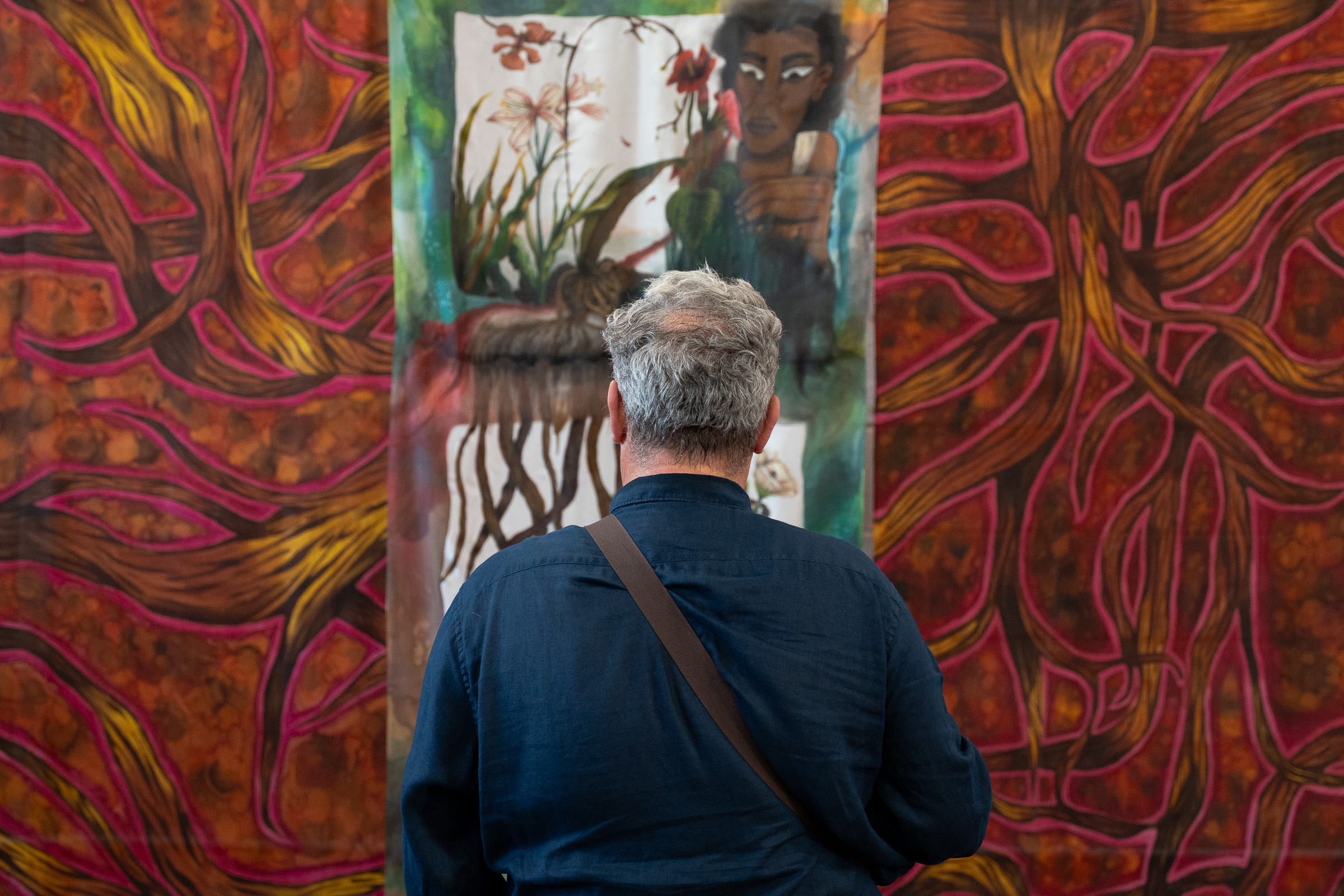
Chimera Island, installation view, Modern Painters, New Decorators, Loughborough, 2025
Looking ahead—has Chimera Island shifted your practice? What’s next?
Definitely. It was my first time using natural dyes so fully, and I want to continue. I’m especially drawn to Logwood, another dye material tied to Jamaica’s colonial history. It produces the deepest blacks and purples, and was cultivated on plantations much like sugarcane. I’d like to explore its history of resistance and rebellion, maybe in connection to Maroon communities.
I’m applying for projects and funding to take that further. I’m also interested in the ephemerality of natural dyes—how they fade over time. I like the idea that the work resists ownership, that it’s durational and changes as it ages.
So yes, natural dyeing, plant histories, and diasporic mythologies will continue to shape my work. And hopefully, Logwood will be central to what comes next.
One last question. Why silk?
Silk came through my background in animation. For nearly ten years, I’ve been thinking about how to translate the layering of animation into physical form. Traditionally, animators used a “multiplane” setup—layers of glass stacked with foreground, middleground, and background, filmed from above. I tried to recreate that physically with materials like Perspex, but then I started experimenting with fabric.
Silk was a revelation. It’s thin, translucent, and responsive to paint and projection. You can layer it, shine animation through it, or let the image degrade beautifully. In Chimera Island I used it more for painting than projection, but the sense of depth and layering is still there.
At the same time, I was getting into gardening and horticulture, so silk and natural dyeing naturally merged into my practice. It’s expanded how I think about installation—almost like set design, theatrical, staged. I love artists like Lubaina Himid, who work with that sense of scenography. For me, it still connects back to animation: process-driven, layered and immersive.
The challenge, of course, is sustainability. Silk is a protein-based material made from silkworms, so I’m also researching alternatives like bamboo silk. Artists’ practices can be incredibly wasteful, especially in installation, so I’m trying to think carefully about materials as I go forward.
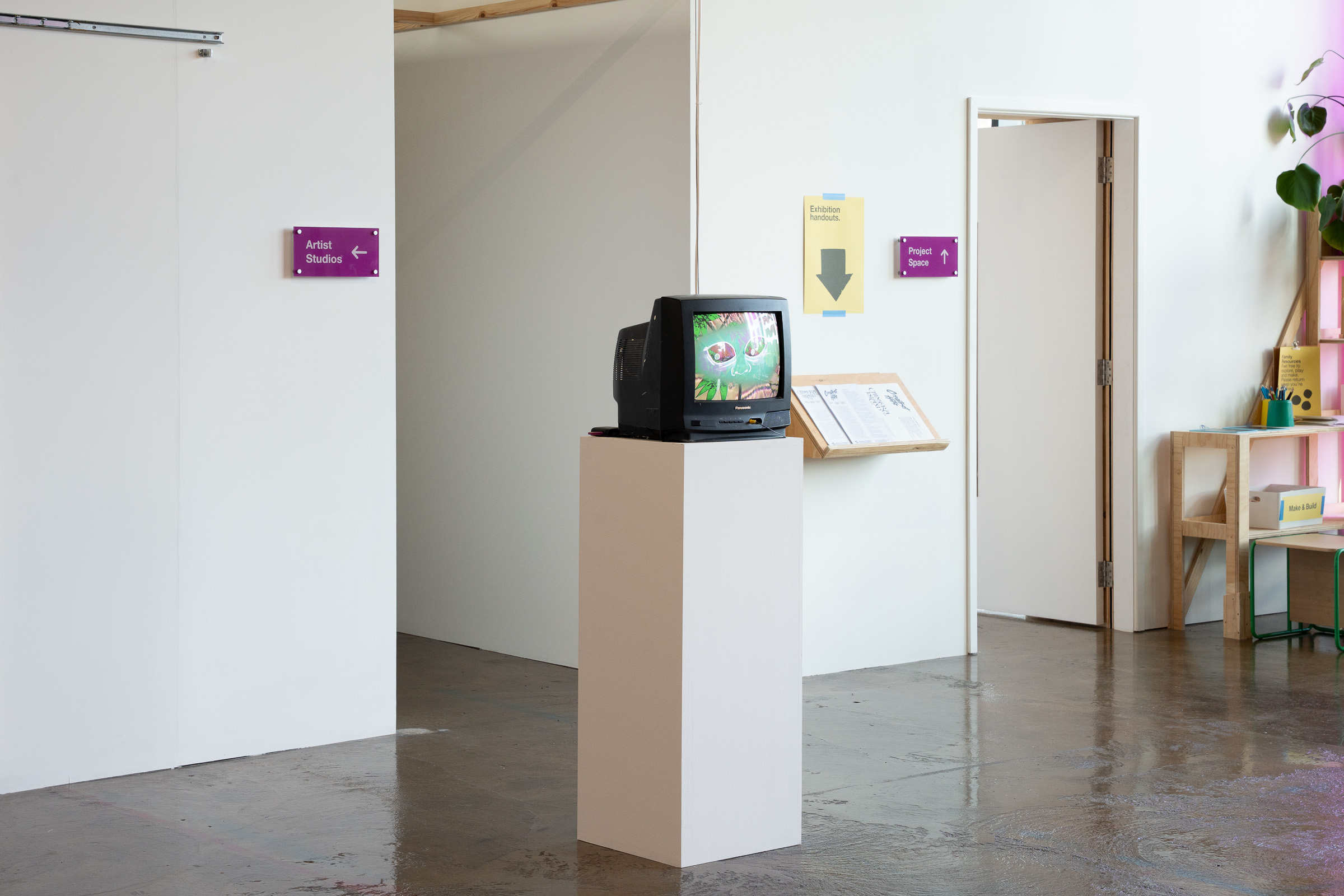
All Power Emanates From The Land, digital animation and archival footage, 2025
It’s fascinating how animation continues to shape your practice, even in more static forms.
Yes, people often ask about that. Animation used to define my work—it was my whole career for the first decade after graduating, from music videos to illustration. But over time, I’ve moved towards what I’d call expanded animation: layering, staging, using time and movement conceptually, even if the pieces themselves aren’t moving images.
I still teach animation at Goldsmiths, and I encourage students to think beyond the screen —to connect animation to performance, installation, moving image art. I wish I’d had that perspective earlier myself, because for years I thought of animation very narrowly. Now I see it as a toolkit that can shape all kinds of practices.
-
︎ @jessica_a_ashman
jessicaashman.com
︎ @artyfartyama
amadogbe.com
-
If you like this why not read our interview with Roo Dhissou.
-
© YAC | Young Artists in Conversation ALL RIGHTS RESERVED
